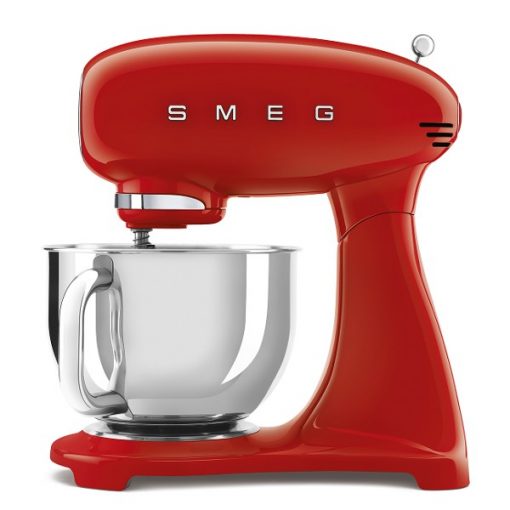If your mixer bowl keeps slipping or won’t lock down properly, you’re not alone. This is a common issue with both tilt-head and bowl-lift stand mixers, especially when they’ve seen frequent use. We rely on our mixers to stay stable during heavy mixing, so when that bowl won’t stay in place, it can be more than frustrating—it can halt the entire recipe.
We’ve worked on plenty of mixers with this exact problem. Therefore, we want to walk you through what we look for first, what steps you can safely try yourself, and when it’s time to get expert help.
Check for Debris in the Locking Groove
The first thing we always check is the bowl base and the platform it locks into. That is to say, any leftover crumbs, dried batter, or even flour buildup can prevent the bowl from seating fully.
Start by unplugging your mixer. After that, remove the bowl and flip it over. Clean around the locking pins or notches on the bowl bottom. Meanwhile, wipe the receiving base on the mixer itself. Use a toothbrush or soft cloth to get into those tight spaces.
Sometimes a small speck of hardened dough is all it takes to stop the bowl from clicking in. Consequently, giving everything a thorough clean may resolve the issue without any further steps. We’ve seen this quick fix work in more cases than you might expect.
Look at the Bowl Itself for Warping or Wear
If cleaning didn’t solve the problem, it’s time to inspect the bowl. Most mixer bowls are made of stainless steel or glass, which should hold their shape over time. However, if the bowl has been dropped or dented, even slightly, that could throw off the alignment.
Set the bowl on a flat surface. If it rocks or doesn’t sit evenly, then it may be warped. Likewise, check the underside of the bowl where it connects to the stand. Look for cracked or worn areas around the locking grooves. These small signs of damage can make it impossible for the bowl to stay locked.
In this case, trying to force it into place can cause more harm than good. You may need a replacement bowl, or if the wear is minimal, a technician might be able to adjust the connection point. For this kind of situation, our team often recommends professional inspection through mixer repair services in Calgary.
Inspect the Mixer Base for Misalignment
Even if the bowl looks fine, the stand mixer’s base might be the real problem. Over time, the locking mechanism itself can wear down, especially if the mixer is used often for heavy doughs or thick batters.
With tilt-head models, open the mixer head and look at the pins or levers at the base. They should move smoothly and line up exactly with the bowl’s grooves. If they look bent or loose, that could be causing the problem.
For bowl-lift models, the arms that support the bowl must raise and lower evenly. If one side is off by even a few millimetres, the bowl won’t sit right. To clarify, this issue may not be visible until you try locking the bowl into place.
If you spot any looseness or misalignment, we strongly suggest having it checked before using the mixer again. Continued use with a misaligned base could cause more damage. In this case, we usually advise customers to reach out directly using the contact form on our site to book a closer inspection.
Try Adjusting the Bowl Height (for Bowl-Lift Mixers)
Some bowl-lift mixers have an adjustment screw near the back of the unit that lets you raise or lower the bowl height. This adjustment is normally for calibrating how close the beater comes to the bottom of the bowl, but in some cases, it can help the bowl seat more securely.
Unplug your mixer, and then locate the screw. Usually, it’s behind the column or inside the bowl support arm. Turn it slightly clockwise to raise the bowl or counterclockwise to lower it. Test after each small adjustment.
However, this should only be done if the mixer manual mentions it. Adjusting too far can throw off the mixing height, which could scrape the bowl or prevent proper mixing. For that reason, we only recommend this step when everything else checks out.
If your model doesn’t have a visible adjustment or you’re not sure where to start, this is another situation where expert mixer repair services in Calgary can save time and prevent guesswork.
Don’t Force a Locking Bowl
We’ve seen it too many times: the bowl won’t lock, and in frustration, someone tries to force it down. This is almost always a bad idea. For instance, forcing a stuck bowl can damage the locking pins, strip the grooves, or even crack the bowl.
If the bowl doesn’t seat easily with light pressure and a slight twist, it’s time to stop and reassess. Forcing it rarely fixes the issue and usually makes the repair more complicated.
Instead, check once again for blockages or mechanical wear. If you’ve already cleaned and inspected everything and the bowl still doesn’t lock, there’s a good chance the issue lies inside the mechanism itself.
That’s when it’s worth reaching out to Mixer Repair Services Calgary. We’re able to take apart the housing, examine internal components, and reassemble the unit safely. To make an appointment, you can always contact us directly.
Bonus Tip: Listen to the Sound of the Lock
This one is often overlooked. When you lock the bowl in place, there should be a clear click or snap sound. It doesn’t need to be loud, but it should be firm and distinct. That sound means the bowl is correctly seated in the base.
If you don’t hear or feel anything, even though the bowl looks like it’s in place, it probably isn’t. Similarly, if the bowl wiggles even slightly when you press down, the connection is not secure.
We always suggest listening for that tactile feedback. Once you’ve heard it a few times, it becomes easier to notice when something isn’t right. In short, trust your senses. If the bowl doesn’t feel locked in, it probably isn’t.
FAQ
What causes a mixer bowl to stop locking?
A mixer bowl may stop locking due to debris in the locking grooves, worn or damaged bowl bases, or misaligned locking pins on the mixer itself. Regular cleaning and inspection can prevent this issue from getting worse.
Can I fix a loose bowl myself at home?
Yes, in some cases. Cleaning the base and checking for visible wear can help. However, if the locking mechanism itself is damaged or misaligned, it’s best to leave it to a technician.
Is a loose bowl dangerous during use?
Yes, using a mixer with a bowl that doesn’t lock can cause the bowl to rattle, spill, or even eject during mixing. This can damage the appliance or create safety hazards in the kitchen.
How do I know if the problem is the bowl or the mixer?
Start by checking the bowl for warping or cracks. If it seems fine, inspect the mixer’s locking pins or arms. If both look normal and the problem persists, the issue may be internal and should be evaluated professionally.
When should I schedule a service call?
If the bowl won’t lock after cleaning and basic checks, or if there are signs of wear or mechanical failure, it’s time for help. You can easily reach out through our contact form to schedule an appointment.



